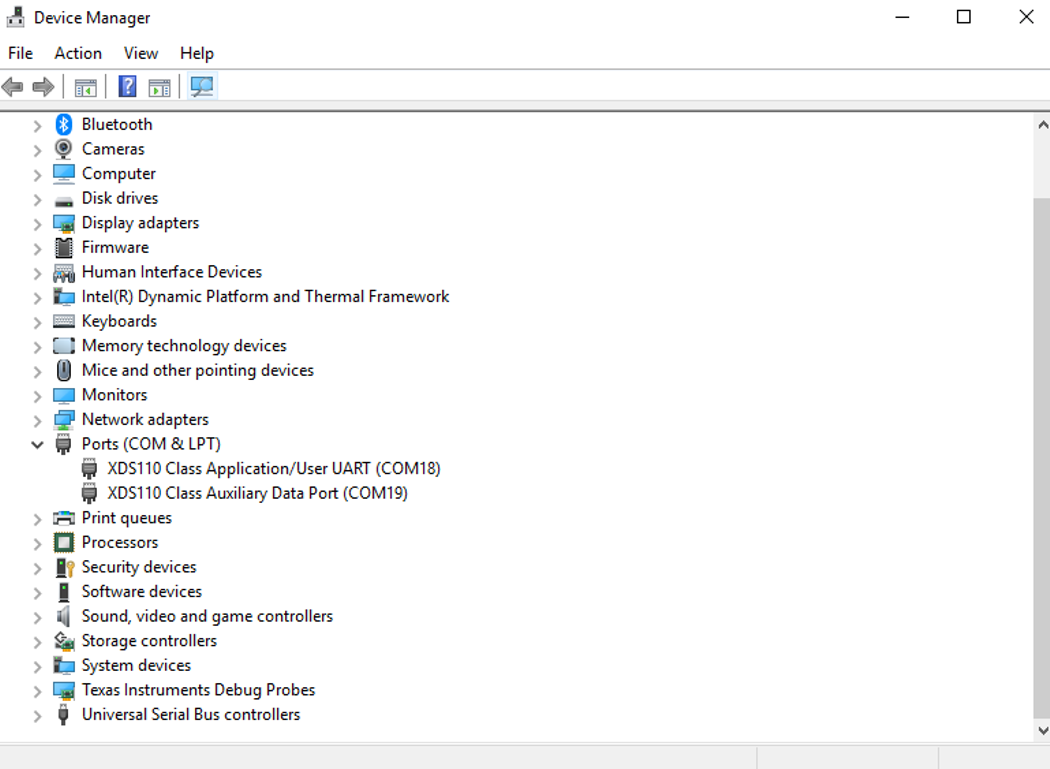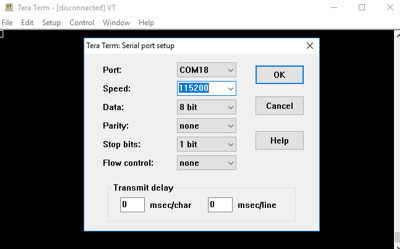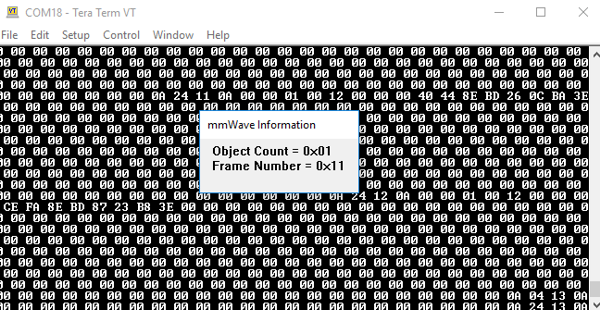TIDUED6B august 2018 – april 2023
- Description
- Resources
- Features
- Applications
- Design Images
- 1System Description
- 2System Overview
- 3Hardware, Software, Testing Requirements, and Test Results
- 4Design Files
- 5Software Files
- 6Related Documentation
- 7Trademarks
- 8About the Author
- 9Revision History
3.1.2.5 Viewing Collector Data Output
When the collector node USB is connected to the PC, the device manager should recognize the following COM ports:
- XDS110 Class Application/User UART
- XDS110 Class Auxiliary Data Port
 Figure 3-16 COM Ports
Figure 3-16 COM PortsLaunch TeraTerm, select "Serial" and select the XDS110 Class Application/User UART COM port from the drop-down menu and click the OK button. Verify that the COM port has the settings as Figure 3-17 shows.
 Figure 3-17 TeraTerm Setup
Figure 3-17 TeraTerm SetupA TeraTerm macro is included to parse the output of the collector node. To launch the macro, select Control menu, then select Macro option. Navigate to the TIDA-010022 firmware folder and select mmWave_collector_macro.ttl.
 Figure 3-18 Macro
Figure 3-18 Macro